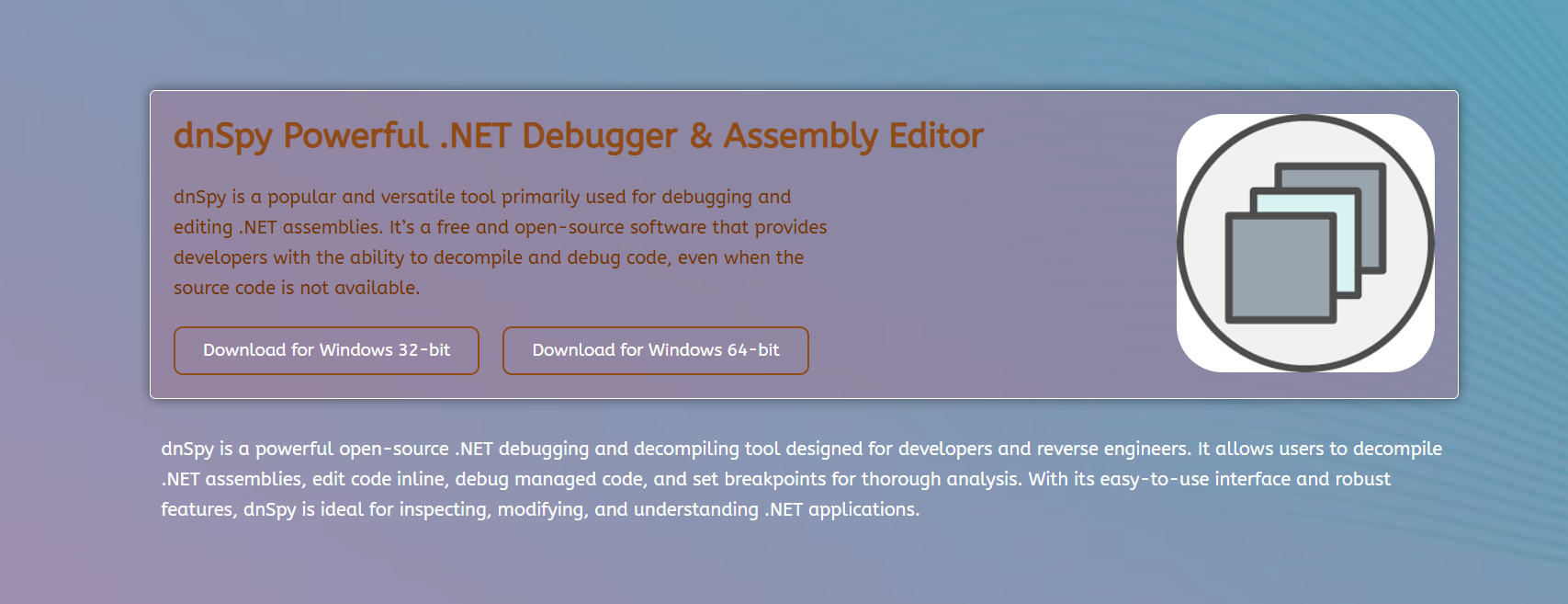dnSpy has become one of the most preferred tools for working with .NET applications. Its ability to decompile, debug, and edit .NET assemblies gives it unmatched relevance among developers and analysts. Many users turn to dnSpy when faced with compiled code lacking source access.
This tool simplifies reverse engineering and application inspection. It allows a detailed breakdown of compiled binaries into understandable C# or VB.NET code. Developers use it to explore logic, debug functions, and even modify existing assemblies.
One of the most frequently asked questions is whether dnSpy can handle all types of .NET applications. This article explores its decompilation strength, compatibility, and technical boundaries without relying on external lookups or superficial comparisons.
Core Decompilation Capabilities
Understanding .NET Assemblies
.NET applications compile into Intermediate Language (IL), which resides in assemblies with metadata. These binaries include .DLL or .EXE files. dnSpy is designed to reverse this process and regenerate high-level source code from IL.
How dnSpy Handles IL Code
dnSpy reads metadata tables, method headers, and IL instructions. It translates them into human-readable syntax using its internal decompilation engine. This output mirrors the original logic and structure of the application.
Language Output Options
Users can choose between C# and Visual Basic as output languages. This gives flexibility in understanding different codebases. Both translations maintain function names, flow control, and class structures.
- Switch between C# and VB.NET views
- Maintain logical structure across both languages
- Adapt easily to different development backgrounds
Accuracy of Decompiled Output
dnSpy generates code that closely reflects the original logic. While some minor optimizations may differ from original syntax, functionality remains accurate. This reliability makes it a trusted tool among professionals.
Application Types Supported
Standard .NET Framework Applications
dnSpy works efficiently with applications built on the traditional .NET Framework. It can handle assemblies developed using various Visual Studio versions. Libraries, UI applications, and command-line tools fall under this category.
.NET Core and .NET 5+ Applications
Modern .NET versions like .NET Core and .NET 5/6 are also supported. dnSpy can analyze these binaries, provided they follow standard compilation models. Users must ensure dependencies are present for full analysis.
Unity and Game Assemblies
Many Unity games use .NET backends. dnSpy allows users to decompile game assemblies, inspect game logic, or patch behaviors. This is useful for modding, bug fixing, or research purposes.
Portable and Obfuscated Assemblies
dnSpy handles most portable applications and can attempt decompilation on obfuscated code. While heavily protected code may be harder to interpret, dnSpy still reveals underlying structure and method signatures.
Key Decompilation Strengths of dnSpy
- Compatible with .NET Framework, .NET Core, and .NET 5+
- Supports game engines using .NET like Unity
- Accurate translation of IL to readable C# or VB.NET
- Handles both libraries (.dll) and executables (.exe)
Limits of Decompilation
Obfuscated Code Challenges
Some developers use obfuscation tools to protect code. These tools rename methods, encrypt logic, or scramble structure. dnSpy may still decompile such files but the readability can be reduced.
Native Code and Mixed Assemblies
Assemblies containing native C++ or unmanaged code cannot be fully handled by dnSpy. It focuses on managed .NET assemblies. Mixed-mode files may only partially decompile.
Dynamic Assembly Loading
Applications that load assemblies at runtime or use reflection to generate code present limitations. These elements might not appear in the decompiled output.
Stripped or Compressed Assemblies
Assemblies that remove metadata or use compression techniques might restrict dnSpy’s accuracy. These limitations depend on the level of metadata removal during compilation.
How dnSpy Processes Decompiled Code
Syntax Reconstruction
dnSpy does not use exact original source but reconstructs functionally equivalent code. Variable names, comments, and formatting are often absent unless preserved in metadata.
Metadata Mapping
The tool maps namespaces, classes, and method definitions using metadata tokens. This process ensures structural alignment with the original application.
Export and Save Options
Users can export the entire project after decompilation. The result can be opened in development environments like Visual Studio. This enables full inspection or reuse.
Performance on Complex Applications
dnSpy handles large, complex applications with ease. Its efficient memory handling and multithreaded design allow smooth navigation and editing.
Core Functional Benefits of dnSpy
- Converts IL back to readable .NET code
- Retains original method structure and flow
- Works without access to original source
- Ideal for debugging, learning, and patching
Real-World Scenarios and Use Cases
Legacy System Analysis
When source code is lost, dnSpy helps recover logic from binaries. Businesses rely on this to maintain or update aging applications.
Debugging Client Software
Developers working on client-server tools may need to inspect compiled client binaries. dnSpy allows them to verify protocol calls or UI behavior.
Education and Learning
Students and educators use dnSpy to understand software structure. It reveals how abstract concepts appear in compiled form.
Software Security Audits
Security professionals analyze compiled applications for vulnerabilities. dnSpy provides access to logic and method calls for inspection.
Practical Examples of dnSpy Usage
- Inspect UI controls and forms in compiled applications
- Analyze communication patterns in web or desktop apps
- Modify method return values for testing or patching
- Learn object-oriented structure from finished software
Enhancing Output Quality
Enable Full Metadata in Compiler
To improve decompilation quality, compile applications with full debugging symbols. This preserves variable names and structure.
Avoid Heavy Obfuscation
Avoiding deep obfuscation improves readability. If possible, use minimal protection to retain structure in assemblies.
Use Export Options Wisely
Exported projects can be reviewed using IDEs. This helps organize code into readable segments and apply further formatting.
Dependency Management
Ensure all required assemblies are available. This helps dnSpy resolve types and methods during inspection.
Tips for Effective dnSpy Use
- Load dependencies to improve decompilation accuracy
- Switch between IL and C# views for clarity
- Use bookmarks and navigation panels to manage large projects
- Export only essential files to reduce clutter
Debugging Alongside Decompilation
Attach to Running Processes
Users can debug live applications while viewing source. dnSpy enables setting breakpoints in decompiled code.
Watch and Inspect Variables
Watches allow monitoring key values during runtime. This helps track logic and performance.
- Track method arguments dynamically
- Monitor return values in real-time
- View stack trace from exceptions
Modify Behavior at Runtime
Users can patch code without rebuilding the entire project. Changes take effect immediately during debugging.
Combine with Hex and IL Views
Switching to IL or Hex view supports deep technical exploration. Developers can cross-check behavior at multiple levels.
System Requirements and Setup
Compatible Windows Versions
dnSpy works across modern Windows editions. It requires no administrative privileges for the portable version.
.NET Runtime Requirements
It runs on systems with .NET Framework 4.6 or above. This ensures compatibility with most existing assemblies.
Installation Options
Users can run dnSpy as a portable app or use the installer. Both versions include all features without restrictions.
Lightweight Performance
dnSpy is optimized for fast loading and smooth navigation. It works well even on mid-tier hardware.
Contribution and Community
Open Source Licensing
dnSpy follows an open-source license model. Developers can inspect or modify the tool as needed.
Community Development
It receives regular contributions and bug fixes. Active users keep it compatible with the latest .NET builds.
Custom Plugin Development
Developers can extend its functionality using plugins. These plugins help tailor dnSpy to specific workflows.
Shared Knowledge
Online communities, guides, and issue discussions improve usability. These resources help beginners and experts alike.
Conclusion
dnSpy can successfully decompile a wide range of .NET applications. It handles traditional .NET Framework, .NET Core, and modern cross-platform binaries. With deep inspection and flexible export options, it supports debugging, patching, and learning tasks. Its open-source model and wide compatibility make it a valuable asset in any developer or analyst toolkit.







